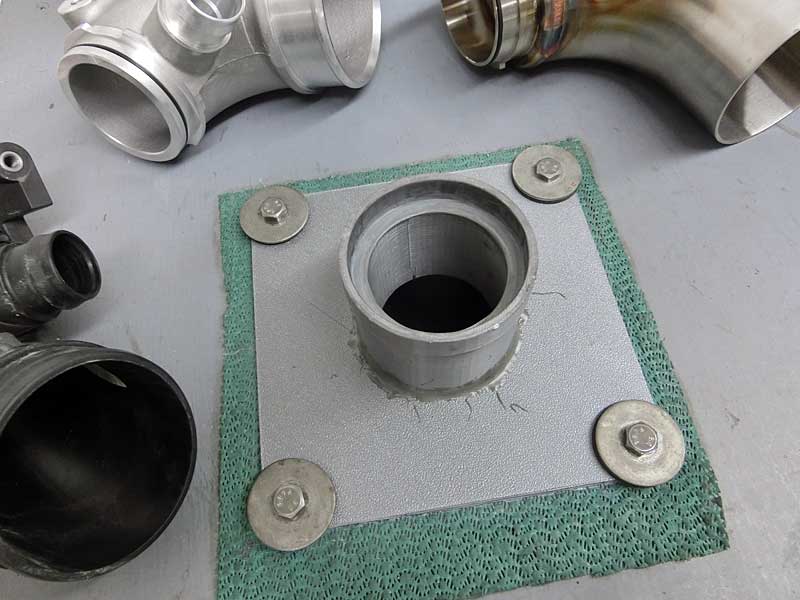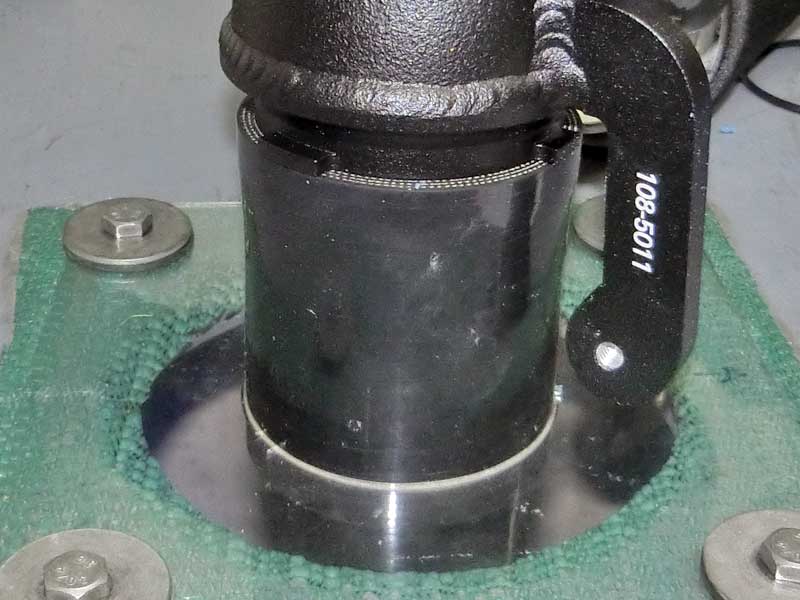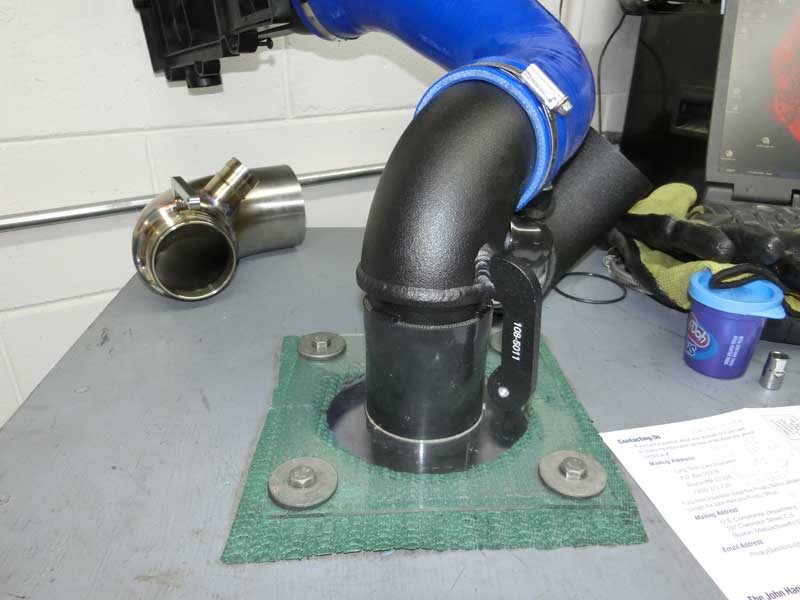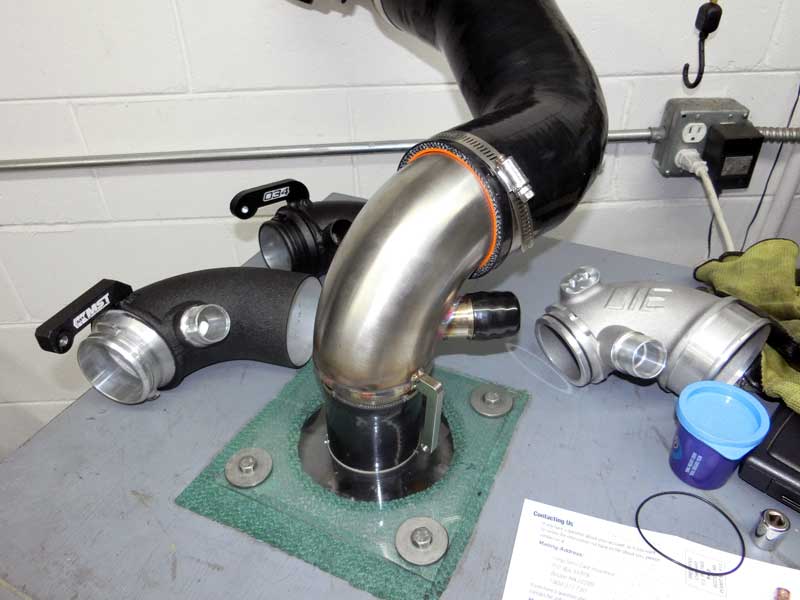Background:
A couple of days ago a new set of turbo inlet elbows were flow tested to see how they compared with the current highest flowing inlet elbow, the MST Performance elbow and hose combination.
Using an adapter that simulates the IS20/38 turbocharger compressor housing the results were even, all of the new elbows flowed the same as the MST elbow.

The same airflow from four different elbows prompted the question if the IS20/38 adapter was limiting these intakes and led to further testing.
Setup:
For the next test a larger adapter is to be used. This adapter is a straight silicone coupler that has an inside diameter (ID) of 57mm. This ID is excellent for creating a snug fit around the outlet of all four elbows and gives a straight path into the flow bench.

By comparison the IS20/38 turbocharger compressor housing inlet has an ID of approximately 49mm.
Aside from the change in the adapter type this test is the same as the previous one and testing will be done at a depression of 28″ of H2O. Once again the products being tested are:
- 034 Motorsport + Racingline hose
- DBV2 + MST hose
- IE + MST hose
- MST + MST hose
Testing:
First to be tested is the 034 Motorsport elbow.

Result: 506 CFM
Second to be tested is the Integrated Engineering inlet elbow.

Result: 475 CFM
Third to be tested is MST Performance.

Result: 513 CFM
Fourth, and final, to be tested is the DBV2 inlet elbow.

Result: 527 CFM
Results Summary:

All products showed significant airflow gains with the larger adapter. Gains range from 16% to 29% versus the maximum airflow measured using the IS20/38 sized adapter.
The variation in gains among these products that all had equivalent airflow through a smaller adapter raises a question of what caused the readings to now be different? Comparing product dimensions with results to identify possible correlation shows a strong relationship between the elbow outlet inside diameter and the maximum airflow measurement.
The list below gives the products in order of peak airflow measured, 1 being the most and 4 being the least, followed by the inside diameter of the elbow outlet.
- DBV2 – 527 CFM – 55.3 mm
- MST – 513 CFM – 53.0 mm
- 034 – 506 CFM – 50.5 mm
- IE – 475 CFM – 49.0 mm
Versus the top flowing DBV2 elbow the other products measured:
- The MST elbow flows 2.7% less air and has an outlet diameter 4.2% less than the DBV2.
- The 034 elbow flows 4% less air and has an outlet diameter 8.7% less than the DBV2.
- The IE elbow flows 10% less air and has an outlet diameter 11% less than the DBV2.
The 034 elbow does not have the same strength of correlation between airflow and outlet diameter that the MST and IE elbows do. This suggests that something else is significantly different with the 034 elbow and has enabled it to flow more than would be expected based upon the outlet diameter.
Inspection of the 034 elbow shows that the PCV port is designed with a clearly smaller hole than the other elbows. It is possible that the smaller hole creates less turbulence facilitating higher airflow.
A test of velocity uniformity exiting the 034, IE, and MST elbows, such as was done during the first series of inlet elbow tests, may reveal if this hypothesis is correct.
Conclusion:
All four of the inlet elbows that were tested using a larger adapter produced significantly higher airflow compared to the same elbows using an IS20/38 turbo size adapter.
Airflow gains at a pressure drop of 28″ of H2O ranged from 16-29%.
The DBV2 inlet elbow allowed the highest airflow, 527 CFM.

So the conclusion is that no matter the inlet elbow, the true bottleneck is the turbo’s compressor housing inlet. In other words, every single “upgrade” elbow does nothing to address the limits of the housing downstream of them. That includes ours. Interesting.
What might be the case is that if the turbo compressor housing inlet were tested alone without an inlet elbow it might only be capable of flowing 410 CFM at 28″. In that case, no matter what elbow is placed before the turbo compressor housing inlet the airflow will not go any higher, if the test is at 28″ of H2O.